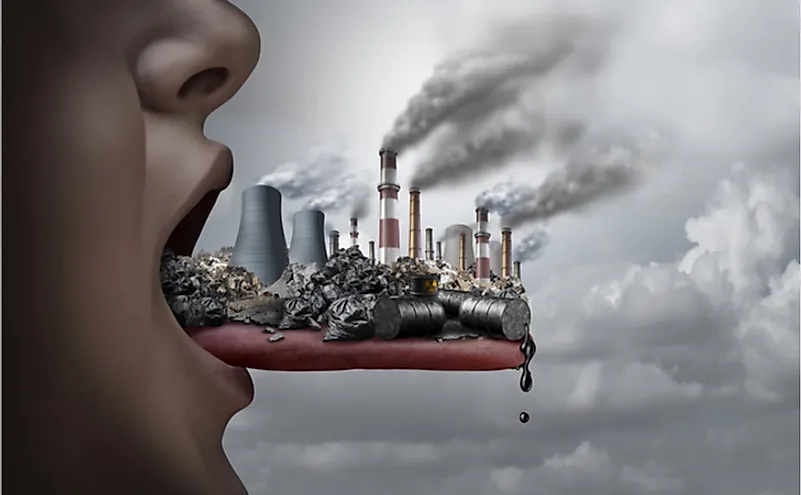Is There A Difference Between Pollution And Contamination?

The terms "pollution" and "contamination" are often used interchangeably since they are both associated with harmful, unwanted elements. Substances that lead to pollution are known as "pollutants," while those that cause contamination are called "contaminants." However, it is very difficult to distinguish between pollutants and contaminants in practical settings. For example, waste material in a river may be a pollutant or a contaminant. When harmful contaminants are introduced into the environment, this results in pollution.
Contamination
Contamination occurs when an external material is introduced to the original matter, or when an already existing substance exceeds the normal level. Contamination may or may not be harmful, depending on the level of variation and the nature of the contaminant. The definition of contamination varies depending on the field involved, as highlighted below.
Chemistry
In chemistry, contamination is the presence of an impure substance that alters the outcome of a chemical reaction. Additionally, in food chemistry, contamination refers to the presence of pathogens in food. Chemical contamination may not necessarily be caused by the introduction of a foreign substance but can occur due to a change in factors that influence a chemical process, such as heat.
Radiology
In radiology, contamination occurs when the level of radiation is above the normal, desired, or expected level within a human body or an environment. Some locations, such as nuclear waste sites and nuclear power plants, are highly restricted due to the presence of radioactive material.
Forensic Science
In forensic science, contamination occurs when evidence collected at a crime scene or during an investigation is tampered with by unwanted substances such as DNA, fingerprints, or hair strands. When forensic contamination occurs, the sampled evidence is no longer valid.
Pollution
Pollution primarily deals with waste materials that harm the air, soil, water, and space. In most cases, pollution occurs when contaminants reach an alarming rate. Air pollution is the presence of harmful compounds in the atmosphere, such as carbon monoxide, sulfur dioxide, and chlorofluorocarbons, which lead to adverse effects such as respiratory problems and depletion of the ozone layer. Water pollution occurs when waste from domestic or commercial activities drains into bodies of water, leading to the destruction of marine life. Land pollution occurs when elements such as pesticides, plastics, heavy metals, and other harmful materials are introduced into the soil, degrading the soil fertility. Light contamination occurs due to the use of bright lights and the rise of industrialization and results in over-illumination and astronomical interference. Noise pollution is caused by exposure to harmful noise from vehicles, sonars, aircraft, and explosives. Such noise leads to psychological problems, as well as auditory difficulties.
Types Of Pollutants
There are two primary types of pollutants: biodegradable and non-biodegradable. Biodegradable material undergoes natural decomposition over a short period and therefore causes minimum damage to the environment. Biodegradable pollutants include dead plants and waste from animals. Non-biodegradable wastes are major pollutants and result in long-term environmental problems. They include plastic, glass, mercury, and pesticides.
Differences Between Pollution and Contamination
Degree of Damage
The degree of damage is usually higher in pollution compared to contamination because pollutants disrupt the ecosystem on a broader scale compared to contaminants. For example, water pollution from mercury kills marine life and renders the water dangerous to humans, while water contamination by fecal matter may not pose a significant danger.
Environment
Pollution usually impacts the larger environment, while contamination may occur on a limited scale or within a particular substance or body. Air, land, and water pollution degrade the quality of flora and fauna, but contamination may occur in a confined area and can be easily mitigated.
Source
Pollution is often the result of human activities, whereas contamination may be caused by humans or occur naturally in the environment. Pollutants are byproducts of the processing and manufacturing industries, while contaminants already exist in water or soil.
Infectious Diseases
Contamination is much more likely to be associated with infectious diseases compared to pollution. For example, bacteria, contaminated blood, genes, or cell lines can lead to sickness, while pollution is less likely involved with the biological transfer of diseases.











